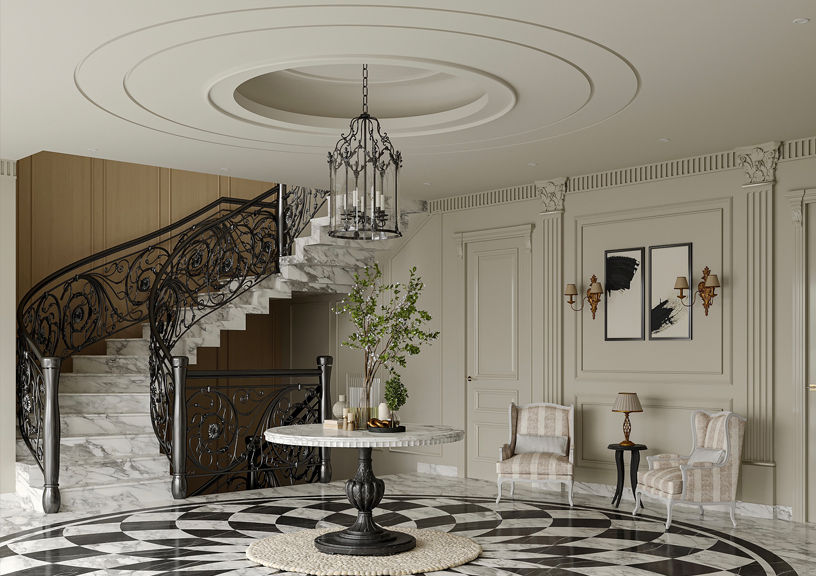The ideal trajectory of India’s design journey should have led us to homes like this one. With a legacy steeped in the majesty of Maharajas and Maharanis, where grandeur and ornamentation were the very fabric of existence, we were meant for something sublime. Then a seismic shift occurred—there came the period of globalisation—ushering in the Western sensibilities, blending the restrained design. For two decades, this confluence of histories flourished, each building upon the other.


Today, we stand surrounded by homes that wear their angular lines like the stiff uniforms of an army, draped in the most uninspiring hues ever conceived. Yes, I speak of the so-called minimalism movement, a design philosophy that has forsaken the soul of architecture in favor of cold, monochromatic sterility. Homes today have been reduced to nothing more than geometrical coldness and barren spaces, emptied of personality and history. The Colonial House in Chhatarpur, New Delhi, by Aashi Gupta Designs, comes as an example of how our homes would be if not infiltrated with the western trend of minimalism.

The black-and-white checkered floor lets one in. Oak veneer paneling ascends elegantly, and the high ceilings open up the space, reminding us of the vastness of royal palaces, where every inch was designed to impress. The void of minimalism has no place here. This home is an anthem to history, design and the art of living beautifully.

In the living room, a Roman Victorian fireplace commands the room, framed by custom brass details that catch the eye. The surrounding space is an interplay of textures—deep reds, plush cushions and a feeling of warmth that draws one in.

The dining room is equally striking, with green-and-white checkered floors defying expectation and adding energy to the room. The oak dining table, flanked by Victorian-inspired chairs, creates a focal point. Above hangs the majestic crystal chandelier (not unexpected at all).

Upstairs, the bedrooms take on their own distinct identities. The master bedroom is a study in restrained luxury. Victorian wallpaper in rich prints adds depth to the room without overwhelming. The guest room, on the other hand, is bold and unapologetic. Its striking blue walls stand in stark contrast to the subdued canvas of the master, while leather-backed furniture and Persian rugs give it a unique personality that is all its own.


What sets this home apart is not just its design but the story it tells. Every detail—whether it’s the intricate woodwork, the bespoke brass fixtures, or the fabrics—speaks to a legacy of luxury that doesn’t hide behind simplicity but embraces complexity. In a world obsessed with minimalism, The Colonial House dares to defy the trends and assert that opulence and history are never out of style.


It serves as a reminder: our design evolution doesn’t have to be dictated by fleeting trends. It can be a celebration of our past, an embrace of our present, and a bold statement for the future. This home stands as proof that luxury doesn’t have to be sterile, that history doesn’t have to be forgotten, and that design should never settle for the ordinary.

FACT FILE:
Name of the project: The Colonial House
Firm Name: Aashi Gupta Designs
Location of the project: Chhatarpur, New Delhi
Area: Half Acres
Photo courtesy: Aashi Gupta Designs
